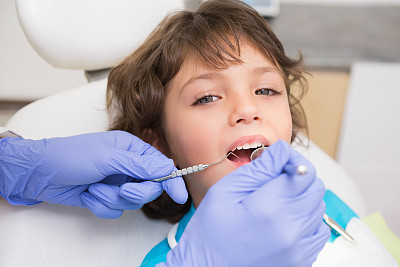Essential Guidelines to Ensure Proper Care and Precautions After Receiving a Dental Filling
Summary: Receiving a dental filling is a common procedure aimed at restoring a tooths function and structure. However, proper care and precautions after the treatment are crucial for ensuring the best outcome. This article outlines essential guidelines to be followed after receiving a dental filling, focusing on dietary restrictions, oral hygiene practices, pain management techniques, and recognizing potential complications. Adhering to these guidelines can significantly enhance comfort and promote the healing process, ensuring that the filling serves its purpose effectively.
1. Dietary Restrictions for Optimal Healing

After receiving a dental filling, it is important to adhere to specific dietary restrictions to facilitate proper healing and to avoid dislodging the filling. For the first 24 hours, it is advisable to refrain from consuming hard, sticky, or chewy foods. These types of food can apply unnecessary pressure on the filling and possibly lead to its failure.
Additionally, if you received a local anesthetic during the procedure, your mouth may be numb for several hours. It is crucial to avoid hot foods and beverages until the numbness wears off, as you could accidentally burn your mouth without realizing it. Soft foods such as yogurt, mashed potatoes, and smoothies are ideal options during this initial recovery period.
After this initial phase, you can gradually reintroduce solid foods into your diet. Nevertheless, it is still wise to avoid very hot or cold items for a couple of days to prevent sensitivity. Consulting with your dentist regarding when it is safe to resume your regular diet is also beneficial.
2. Maintaining Oral Hygiene After Treatment
Oral hygiene plays a vital role in the recovery process following a dental filling. Keeping your mouth clean helps prevent infection and ensures the longevity of the filling. It is recommended to gently brush around the filled tooth, but be cautious to avoid disturbing the filling itself.
Using a fluoride toothpaste is advantageous, as fluoride aids in strengthening teeth and can help with sensitivity. If your dentist has suggested any specific mouthwash or oral care products, be sure to follow their recommendations closely. It can provide additional protection as your mouth heals.
Flossing is equally important; however, you should be gentle around the filled area to avoid dislodging the filling. Waiting at least 24 hours before flossing can be beneficial, giving the filling time to settle. Proper oral hygiene not only keeps the area clean but also minimizes the risk of further dental issues.
3. Managing Pain and Discomfort Effectively
It is not uncommon to experience some level of discomfort or sensitivity following a dental filling procedure. This discomfort usually subsides within a few days. Over-the-counter pain relief medications such as ibuprofen or acetaminophen can help manage pain effectively. Be sure to follow dosage instructions to avoid any adverse effects.
If you notice persistent pain that lasts longer than a few days, or if it intensifies, it is crucial to reach out to your dentist for a follow-up. This could indicate complications such as an incomplete filling or an issue with the tooth itself.
Your dentist may also recommend other pain management techniques, such as applying a cold compress to the outside of your cheek to reduce swelling or discomfort. Understanding how to manage pain effectively will improve your overall comfort and satisfaction following the procedure.
4. Recognizing Complications and When to Call a Dentist
While most recoveries from dental fillings are straightforward, it is essential to be aware of potential complications. If you experience severe pain, swelling, or fever, these could be signs of an infection or other significant issues. In such cases, contacting your dentist as soon as possible is imperative.
Another sign to watch for is sensitivity that lasts longer than anticipated, particularly to hot or cold temperatures. This could indicate that the filling is too high or that there may be underlying issues requiring attention. Regular follow-ups with your dentist can help address any concerns quickly before they escalate.
Additionally, you should be vigilant about any changes in the appearance or function of the filling itself. If you notice it becoming loose, discolored, or if there are any cracks, seek immediate dental advice. Recognizing these signs early can preserve the integrity of your dental work and ensure ongoing oral health.
Summary:
In conclusion, following the essential guidelines after receiving a dental filling can significantly enhance your recovery journey. Adhering to dietary restrictions, maintaining oral hygiene, managing any discomfort, and being aware of potential complications are crucial steps. Each of these aspects ensures that your dental filling remains effective while safeguarding your overall oral health.
This article is compiled by Vickong Dental and the content is for reference only.



